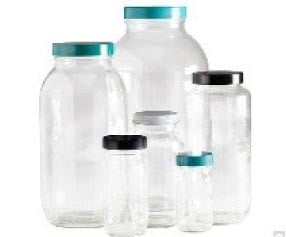Have you ever had days of extracting oil and grease samples and thought to yourself “there must be an easier way to work with wastewater samples”? Whether you run oil and grease samples by liquid-liquid extraction (LLE) or by solid-phase extraction (SPE) it can be challenging at times to efficiently extract 1-liter samples due to the sample matrix.
Wastewater is challenging and can be very complicated and contain many types of particulates and or detergents. The makeup of the sample not only interferes with efficient extractions due to matrix issues (such as emulsions) but can also cause slow flow rates.
One question I am often asked by customers when faced with highly concentrated or particulate samples is “what can be done to help increase their workflow”? No matter what method of extraction you use, this type of sample can cause a bottleneck in your extraction lab. When faced with highly concentrated samples especially ones over 500 mg/L, the lab can collect smaller volumes. When doing so, you will need to add the correct proportion of acid to the samples to ensure that they are preserved correctly. Volumes as low as 100 mL are commonly collected for oil and grease testing. This is an allowable modification to EPA Method 1664B, as long as all quality control requirements are met, the lab can perform extractions with a lower sample volume. If you are experiencing emulsions with smaller volumes using LLE, this would be a good time to explore solid-phase extraction. SPE is an allowable alternative extraction technique that is used to prevent the formation of emulsions. With a smaller sample size, labs will be able to process highly concentrated wastewater samples easier and with less manual interaction.
concentrated or particulate samples is “what can be done to help increase their workflow”? No matter what method of extraction you use, this type of sample can cause a bottleneck in your extraction lab. When faced with highly concentrated samples especially ones over 500 mg/L, the lab can collect smaller volumes. When doing so, you will need to add the correct proportion of acid to the samples to ensure that they are preserved correctly. Volumes as low as 100 mL are commonly collected for oil and grease testing. This is an allowable modification to EPA Method 1664B, as long as all quality control requirements are met, the lab can perform extractions with a lower sample volume. If you are experiencing emulsions with smaller volumes using LLE, this would be a good time to explore solid-phase extraction. SPE is an allowable alternative extraction technique that is used to prevent the formation of emulsions. With a smaller sample size, labs will be able to process highly concentrated wastewater samples easier and with less manual interaction.
So, what can you do if your lab can’t control the sampling process and you are still receiving 1-liter samples that have high levels of hexane extractable material (HEM) and matrix? If you are running SPE you can run part of the sample on one station and the other part on another station, combine the extracts and concentrate them to get one final weight. The key point to remember is that you must run the whole sample and then rinse the original glass sample container with hexane and hold onto that hexane until it’s time for rinsing and elution. If this is carried out by automation, most instruments have an automated rinsing feature that takes care of this. If this is done manually one mistake that is often made (that can impact your results) is when a user rinses the sample container with hexane and then pours the hexane into the disk holder, right after the sample has passed through. If this action is carried out then the HEM from the sample will be extracted from the disk and will flow into the water waste container resulting in false results.
To summarize, you can utilize smaller sample sizes but you must process them in the correct way. Always follow the method and all quality control requirements in order to move to an allowed modification. If you are not familiar with SPE contact the vender of the manual and or automated instrument you are using to ensure you are carrying out all the necessary steps correctly to ensure success.
For more information on oil and grease extraction, visit our blog.

